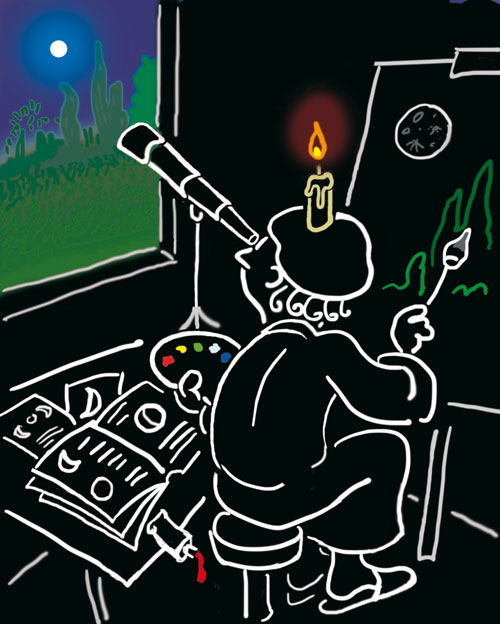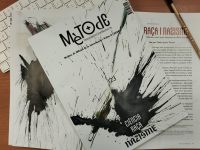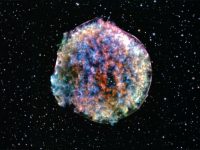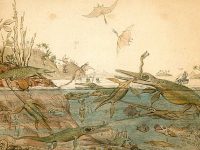
Illustration: Anna Sanchis
In 1612, Ludovico Cardi, aka Cigoli, painted an Immaculate Conception scene in the Pauline Chapel of Santa Maria Maggiore, the great Roman basilica. Not the best Immaculate Conception scene in art history, but it is the first one that depicted the Moon as God intended it to be. Religious leaders argued that God intended something else and attacked Cigoli, who had painted a Galilean moon. Medieval traditions claimed the Moon had to be smooth and spotless white, and that is why the Inmaculata rested her feet on it. But Galileo had just demonstrated that the Moon’s surface was rough, due to craters, and rather grey. Cigoli painted the first proper moon (with the exception of a fairly reliable moon, circa 1430, Jan van Eyck had depicted in his famous Crucifixion). He got scolded, obviously.
When Van Eyck painted his reasonably realistic Moon, contemporary Orthodoxy was angry to find what humanist Poggio Bracciolini had discovered a little earlier, in 1417, in a German monastery. He had found the only remaining copy of De Rerum Natura, a poetry piece by poet and philosopher Titus Lucretius Carus, Lucretius for friends (first century BC). It was a remarkable literary work as well as philosophically revolting. Physics and biology acknowledge it today as their oldest antecedent. As splendidly outlined by Martí Domínguez in El somni of Lucreci, (“Lucretius’ Dream”) it is a solvent explanation of nature, from atomic theory to the evolution of species, which was written two thousand years ago.
Galileo and classical philosophers were already a heavy burden for the Catholic Church and now they had to deal with artists and humanists as well. It got worse. The Renaissance reintroduced Greco-Roman thought and the scientific method made its appearance through experimentation and measurement. The scientific method resulted in a new way of thinking. Technosciences that derived from it have transformed the world in such a way that we have lost sight of the philosophical status of science. Science is not opposed to humanities: it joins them with excellence, while discarding myths and frauds, both from a physical or metaphysical nature. Galileo did not describe what he saw through the telescope, he thought from what he saw. That is why he was so dangerous.
«Science is not opposed to humanities: it joins them with excellence, while discarding myths and frauds, both from a physical or metaphysical nature»
Two and a half centuries later, Darwin did the same thing: thinking. Collecting herbarium specimens is a parascientific activity: supporting a biological explanation on those specimens is science. That is, the progress of knowledge that mandates the revision of previous convictions. We just can’t be bothered. The Enlightened fought this conformist apathy: Sapere aude (“Dare to know”). The Academy of the Distrustful, founded in Barcelona in 1700 by Ignasi de Dalmases and a group of other avant la lettre enlightened had even gone a step further. The Academy responded to the motto Tutta, qui diffidens (“Safe, because it mistrusts”). It had to stop its activity in 1714, when the Bourbons seized Barcelona and reduced Catalonia to absolutism, which was already established in their most faithful dominions. Quite revealing.
The truth is often a pertinent impertinence. Opposed to previous fallacies. This is always frowned upon by the guards of the status quo, who are more concerned about their comfort than about the development of knowledge. Knowledge is a real nuisance. It puts things in their rightful place and that alters the vantage point of prejudice managers. Lucretian inductions, Galilean evidence or Darwinian deductions were attacks against mental laziness, which is more powerful than any dogma can be. Ideological reasons do not explain human resistance to change. Basically, they tend to sloth. They just can’t be bothered.





